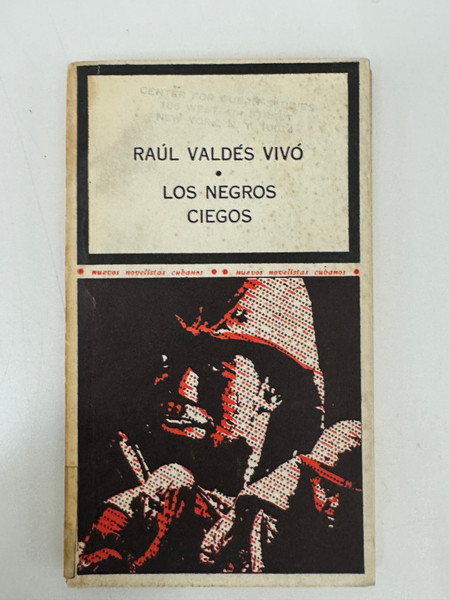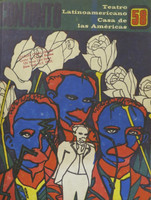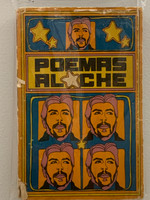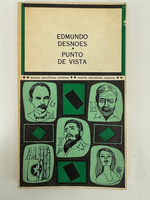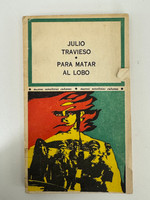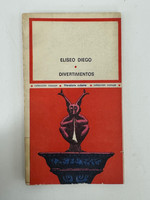- Travel
-
Exhibits
- La Portada Cubana
- Immortal Cuba: Artists Take on Their Heroes
- Seattle Poster Exhibit
- Sandra Dooley & Alejandrina Cué
- The Art of Wayacón
- Cuban Folk Art
- Cuba In Black And White
- 25 Years of Cuban Art Space
- Summer Folk Art Expo
- ¡SPRING AWAKENING FROM CUBA!
- Celebrating The Art Of Cuban Women
- Celebrating Paper, Affordable Art from Cuba
- Art of the Revolution
- Outsider Art
- Lost and Found
- En la lucha: Celebrating Cuban Women and Their Art
- Cuban Art Stash
- 100 Fires: 5 Cienfuegos Artists' Work on Paper
- Waya + Monte! Magic Realism in Cienfuegos
- Viva Cuba Viva! Poster Show
- Cultivando Sueños
- Black Lives Matter in Cuba Jan 9-March 27
- Leandro Soto: Crónicas visuales
- Cuban Canvas
-
Archive
- Global Reflection 2018: Spirit and Community
- Exhibit in the cloud: Contemporary Works on Paper
- MADE IN CUBA! MINNEAPOLIS EXHIBIT
- Cuban Posters and Photography from CCS collection
- AUTUMN SALE! Sept/Oct 2017
- SPRING ARTS AND CRAFT SALE
- Vuelo Directo/Non Stop: Alberto & Alejandro Lescay
- The Many Faces of Fidel
- Somos
- Made in Cuba!
- The US empire in Cuban graphics
- Made in Cuba/Seattle exhibit
- Entre Nos
- Looking Back
- Cuban Art Space
- Membership/Donate
- About Us
- Cuba News
-
The cover of "Los negros ciegos" (The Blind Blacks) exemplifies Raúl Martínez's mastery of high-contrast photographic manipulation, featuring a haunting image of Marines' faces rendered in red and black halftone dots against a stark black background. The fragmented, screen-printed aesthetic creates a sense of psychological disintegration that mirrors the novel's exploration of racial conflict within the American military during the Vietnam War. This bold graphic treatment transforms the photographic source material into a powerful political statement, using the visual language of revolutionary Cuban poster design to critique U.S. imperialism and racial injustice.
Published in the "Colección Cocuyo" series of "nuevos novelistas cubanos," this groundbreaking 1971 novel explores the bold intersections of race, war, and consciousness during one of the most explosive periods in contemporary history. Set in a Marine training camp amid the jungles of South Vietnam, the narrative follows a group of Black soldiers grappling with the contradictions of fighting for the "American way of life" while facing systemic racism within their own ranks. The novel attempts to simultaneously penetrate the fabric of history and individual consciousness, bringing two of the era's most urgent themes into Cuban revolutionary literature.
The book opens with an epigraph from Fidel Castro addressing a Black mercenary at Playa Girón, alongside Nicolás Guillén's powerful verse calling for racial solidarity. The narrative is framed by actual news dispatches about prisoner exchanges and military operations, grounding the fiction in documented reality. Printed in April 1971 during the "Año de la Productividad" with a run of 10,000 copies, this work represents Cuban literature's engagement with international liberation struggles and anti-imperialist solidarity.
Raúl Valdés Vivó (b. 1929) began his career in 1946 writing for Mella magazine, which he later directed clandestinely during the Batista dictatorship. After the revolution's triumph, he served as assistant director of the newspaper Hoy. In 1965, he visited the liberated zones of South Vietnam as a journalist, and by late 1966, he had traveled throughout North Vietnam, becoming one of the few foreigners to reach the 17th parallel during the final months of American bombing. In June 1967, he was accredited as Cuba's Ambassador to Cambodia, and in March 1970, he presented his credentials in the South Vietnamese jungle to become the first—and at that time, only—Ambassador to the FNL and the Provisional Government. Prior to this novel, Valdés Vivó published three books of stories about Vietnam, bringing firsthand experience to his fiction.
-
-
Discover More at the Center for Cuban Studies

